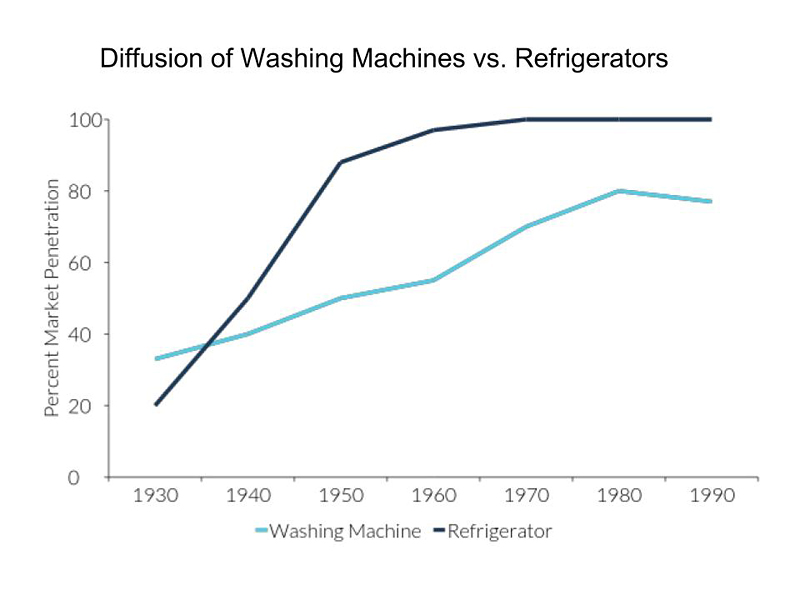A few weeks ago, I recommended an EdSurge piece by the Clayton Christensen Institute’s Julia Freeland Fisher. It featured this graph of refrigerator vs. washing machine diffusion:

I saw this same image featured last week in a main stage talk at the IMS conference, so it is making the rounds.
Audrey Watters pointed me to this blog post responding to Freeland Fisher by CSU Pueblo history professor Jonathan Rees. Jonathan has made several appearances here on e-Literate. I would describe him as an open-minded and engaged ed tech skeptic. He teaches using tech but is suspicious of narratives such as Christensen’s “disruptive innovatation” that tend to displace educators in favor of tech. He also happens to be a scholar of the history of refrigeration.
Ruh roh.
Jonathan takes apart the graph using a number of tools of scholarship:
- He notes the lack of sourcing for Freeland Fisher’s data. (This is a problem that’s common in ed tech blogging and reporting—as opposed to scholarship. The less formal style of writing and different audience invites a certain sloppiness in sourcing at times. We’ve occasionally been guilty of this sin on e-Literate.)
- He surveys alternative scholarship, finding a difference in diffusion rates for the washing machine than the figure Freeland Fisher cites.
- He looks at differences in the analyses to explain differences in the data. “Perhaps this [difference] can be explained by the difference between owning a washing machine and ‘accessing’ a washing machine in the basement of your apartment building or taking your dirty laundry down the street to a laundromat.”
- He looks at differences in context to explain differences in the data: “French or English people in 1957 still had easy access to fresh meat and produce at large markets. Many still choose to live that way today because fresh perishable food tastes better. Americans, on the other hand, tend to preference convenience over taste. That’s why the refrigerator industry was one of only three in the whole United States to grow during the Great Depression.”
These are all solid analysis techniques that are common in scholarship across many disciplines. But we rarely see them applied directly to claims of “efficacy” in ed tech, particularly in mainstream outlets where academics who are not education scholars can read them and evaluate the arguments.
Whether Rees is correct in his takedown of Freeland Fisher is almost beside the point to me. His casual demonstration of scholarly analysis is a stark reminder that we are missing something critical in our academic conversations about ed tech.
Read it here.